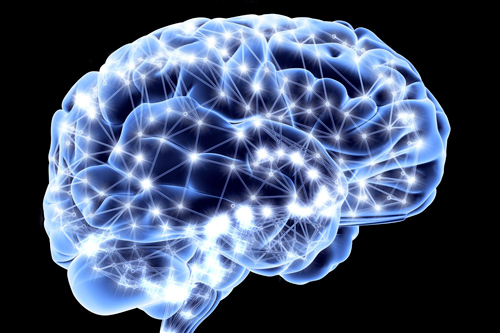According to Dr Itzhak Fried, Professor of Neurosurgery and Psychiatry & Biobehavioral Sciences at UCLA, “We only need to see something once to remember it.” The senior author of a study recently published in the journal Neuron, Fried and his team’s findings put us closer to understanding exactly how memory happens.
In an experiment that paired such famous faces as Jennifer Aniston, Julia Roberts and Clint Eastwood with equally famous locations (the White House, the Hollywood sign, etc), researchers proved that single neurons in the medial temporal lobe (the area of your brain critical to the formation of long-term memory) quickly alter their firing pattern at precisely the instant you learn a new association between a person and a place. More than that, specific neurons are designed solely to encode the conceptual elements of a face versus actual features. This research definitively illuminates how the brain contextualizes the people it sees.
While scientists don’t know how to fully identify the basic neural code underlying a memory, Fried and his colleagues’ and similar findings may help advance the field of neuroprosthetics: brain-implanted hardware and software aimed at increasing memory function of patients suffering traumatic brain injury. The field of memory is becoming very high-tech.
While future technology may be neither appropriate nor accessible to those of us just trying to remember facts we read in an article (one of my personal failures), there are many daily processes we can practice to improve both memory and the activity that gives it a big boost: concentration.
How memory happens
Memory creation happens in an instant. Signals sent in particular patterns associated with specific experiences create connections between brain structures that encode information. Many articles suggest ways to improve memory and concentration via what you “should” do to see results. Implementing new processes and procedures can always be beneficial. However, eliminating daily practices ranks equally in importance. If you’ve already learned to use mnemonics, mental mapping and the peg system, try stopping any of these anti-memory actions to boost your recall power:
Eating bad foods. Blood vessels originating in the heart extend to the brain. Eating high trans fat, full-fat dairy or fried foods increases cholesterol and artery-clogging plaque, which blocks blood vessels and decreases functionality in the heart and brain.
Over-exercising your body. Exercise is good for heart and brain health, but too much can have adverse effects. Thirty to 60 minutes five days a week is plenty to help blood vessels optimally function.
Over-exercising your mind. While crossword and other brain exercise programs can be beneficial, less extreme brain exercise that helps your brain participate in creating new thoughts and associations can be more gently effective.
Overworking your brain. It’s great to challenge yourself to remember things, but your brain’s not a computer with a limitless memory chip. Use notepads and other devices to help offload information.
Relying on electronics. While it’s important to offload information, balance is the key here: Too much reliance on technology (not asking your brain to remember anything) weakens your memory muscle.
Sacrificing sleep. Your brain needs sleep to solidify long-term memories,clear short-term memories and give you the ability to focus. If you lose sleep at night, find time to nap during the day; naps have been proven to deliver powerful results that improve memory, cognition and creativity.
Zoning out. Part of how to improve memory and concentration is making the effort to be present. The mind naturally wanders. The more you commit to (a) noticing your mind wander and (b) bringing it back to a selected focus (the basic underpinnings of meditation), the more your brain will develop the ability to do this on its own.
Depending on only one of your senses. Simultaneously being aware of and using two or three of your senses makes it easier to recall an experience. For example, in a conversation, both listen and take notes.
Being lazy. Rather than simply letting information flow over you, deliberately work to contextualize and structure it. Link new information to facts you already know and organize it into components that make sense.
Robotically accepting information. For details that you want to remember, it’s important to review pertinent facts. Neuronal pathways and their synapses strengthen with use, which makes actively engaging with information much more likely to amp up your ability to recall it.
One final tip to factor in to any process you employ to improve memory and concentration: Your brain likes diversity. Neurogenesis (the process by which your brain creates new neurons, the tiny brain structures responsible for sending signals in the brain) benefits from new and different experiences. The more surprising and novel the experience, the more your brain responds—which greatly improves what you remember and how easy it is to recall.
Click here to get inspired by Rose’s easy steps to positively change your mind



